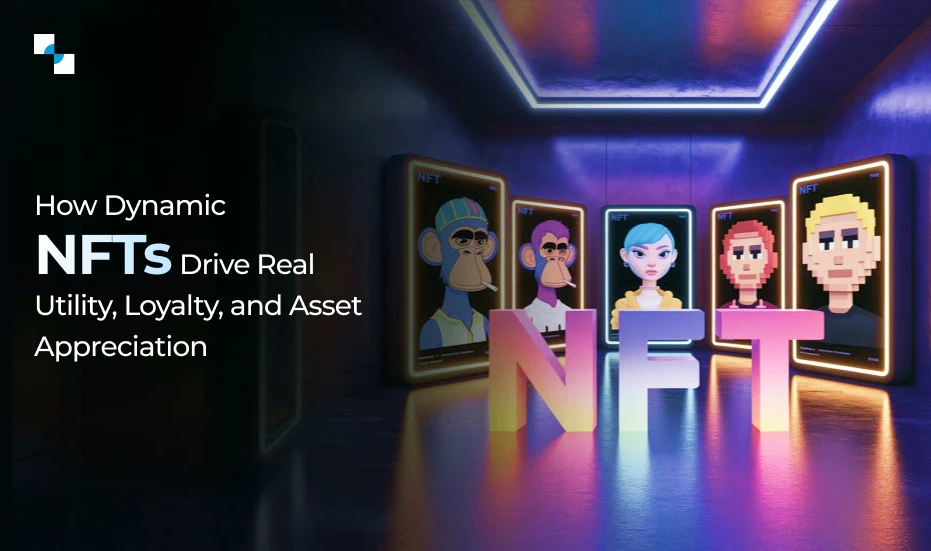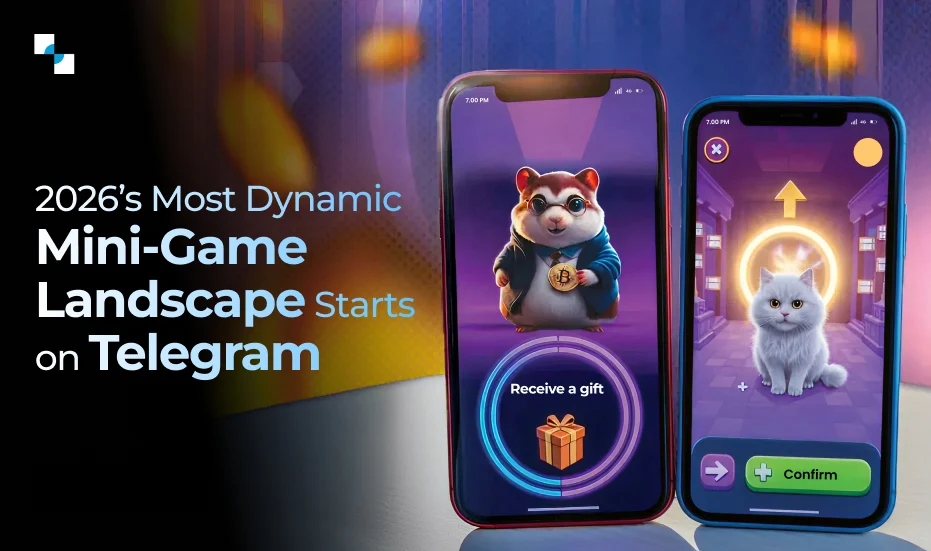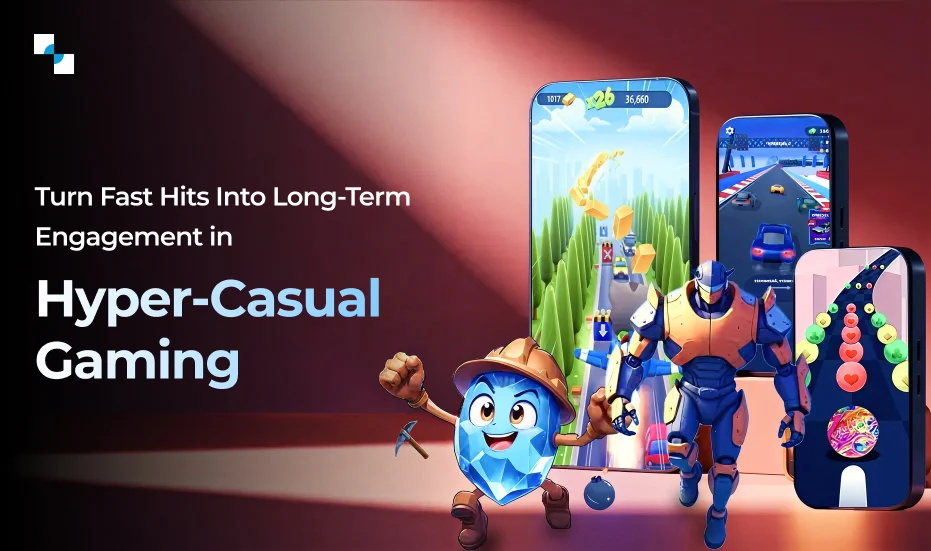The gaming industry is abuzz with the potential of play-to-earn (P2E) models, and for good reason! Just imagine a world where your time in games is meaningful beyond enjoyment or frustration, and where value is created. For today’s gaming communities and game studios, Web2 to P2E is not just a tech upgrade; it’s a way to demonstrate or redefine what games can do. In this blog, we will present the important steps to take to move a Web2 game to P2E game development, identifying opportunities and potential pitfalls for game developers and stakeholders along the way.
Why Transition from Web2 to Play-to-Earn?
When thinking about the transition from Web2 to P2E, it is important to bear in mind that it is more than simply a new tech feature. It is a shift in the ownership and value created for players, developers, and the game. In traditional Web2 games, players invest time and money, but rarely see any return. P2E is the opposite, allowing for real ownership of in-game assets, real earnings, and true transparency of ownership and the game ownership itself. On top of this, P2E means new revenue models and seasonal opportunities for studios and investors, with opportunities for even more active player engagement.
- True Ownership: Blockchain technology allows players to truly own their in-game assets as NFTs, which can be traded or sold.
- Monetization for Players: P2E game development models reward players with cryptocurrency or NFTs, turning gaming into a potential income source.
- Enhanced Transparency: Blockchain ensures all transactions and asset ownership are transparent and tamper-proof.
- Community Engagement: DAOs give players a voice in game governance, fostering loyalty and active participation.

How to Make Your Web2 Game Play-to-Earn Ready?
As the gaming industry is undergoing profound changes at high velocity, the Play-to-Earn (P2E) revolution is changing the game in terms of how value is created and delivered in digital games. Players are no longer willing to simply pay to play. Today’s consumers are engaged with digital ecosystems, rather, for their participation, creativity, and skill. The P2E game development transition is not a threat to game studios operating in the Web2 world, but rather a significant opportunity.
Transforming your existing Web2 game into a P2E-ready ecosystem is more than just an advancement in technology—it’s an evolution in your business. From player ownership models to tokenized economies, the benefits of converting your existing game from Web2 to P2E are numerous, including wider monetization channels, greater retention of players, and access to Web3-native funding models. For your journey to be successful, it involves strategy, infrastructure, and, most importantly, partners.
Let’s explore how you get started on your transformation to “P2E-ready” and the steps associated with transitioning your existing Web2 game into a P2E-ready ecosystem.
Step 1: Assess Your Game for P2E Viability
Prior to any development work or token integrations, the first step in creating a P2E (Play-to-Earn) game is an audit on the overall game design and user experience. Not every game created by Web2 companies is a good fit for P2E, and may actually add unwanted friction to the overall experience.
Ask yourself:
- Does your game already have in-game currencies, items, or assets?
- Are there competitive, cooperative, or achievement-based mechanics?
- Can the game foster a community or guild-based dynamic?
Games like RPGs, strategy simulators, trading card games, or open-world games in an established economy are the best platforms for P2E game development. Casual mobile games can also work for P2E if they fit into the framework using rewarding models and token flow.
Step 2: Redesign the In-Game Economy for Web3
The success of P2E games is based on the player-driven economy. Unlike traditional games where no one can take anything externally from the game and everything is locked inside a game world, P2E game development allows players to earn something of value that they can spend in or trade external to the game world. Because of this, you will need to rethink the economy and in-game experience completely.
Here’s what this may involve:
- Launching utility tokens for in-game usage and upgrades
- Introducing governance tokens for community participation
- Minting NFT-based in-game assets that can be traded in open marketplaces
The real challenge is sustainability. You must ensure the reward system doesn’t lead to inflation or imbalance. Our team at Antier builds custom tokenomics frameworks that strike a healthy balance between player incentives and project longevity.
Step 3: Select the Right Blockchain Infrastructure
Choosing the right blockchain layer is like selecting the foundation for a skyscraper—it determines the game’s scalability, speed, and overall experience.
Factors to consider:
- Transaction speed and fees – Vital for smooth player experience
- Developer tools and SDKs – To accelerate smart contract deployment
- Cross-chain support – To reach a broader user base
Some common ones are Polygon, Immutable, Solana, and BNB Chain. At Antier, we will consider your project, your goals, and the right blockchain for your needs and user demographic to scale.
Step 4: Integrate Smart Contracts and Wallet Onboarding
Web3 is built on trustless automation—this is where smart contracts come into play. Smart contracts are self-executing code that establishes rules for everything—how rewards are distributed or in-game NFTs are minted or transferred.
We help integrate:
- Smart contracts for earning mechanics
- NFT minting engines
- In-game marketplaces
- On-chain reward validation systems
You will also need to consider wallet solutions like MetaMask, WalletConnect, or custom custodial wallets for potential Web2 players that may not be crypto-friendly. Making that flow intuitive is essential to mass adoption, and this is where our UX skills will be invaluable.

Step 5: Tokenize Game Assets as NFTs
A P2E experience requires the weapons, skins, avatars, and other items players have earned or unlocked to have a tradable value in the real world. In this way, NFTs make this possible. Players can truly own any and every weapon or skin permanently, as it can all be tokenized.
But, utility is super important. NFTs shouldn’t only be cosmetic, they should have a reason within the game and be scarce. Whether you’re creating upgradeable assets, crafting systems, or rental systems for the NFTs we use in our projects, we can ensure our NFTs are valuable, and interoperable.
Antier is a premier P2E game developer and utilizes tokens like ERC-721 and ERC-1155 to help ensure seamless transfer to popular marketplaces.
Step 6: Build or Integrate a Player Marketplace
An NFT universe without a trading hub is like an economy without a stock exchange. Players need the ability to quickly and effortlessly buy, sell, rent, or trade NFTs and tokens. This can be done by:
- Creating your own in-game marketplace
- Leveraging existing third-party marketplaces like OpenSea or Rarible
We tend to recommend a hybrid that gains the ease of a third-party integration and retains the improved control of a native marketplace in your NFT economy. And yes, this can also act as an additional revenue stream for you as a fee on transactions.
Step 7: Foster a Community-Driven Game Culture
Web3 is more than just technology; it’s culture. In P2E, your player base is your investors, marketers, and evangelists. That’s why employing active community building through Discord, Telegram, Twitter, and forums is so important.
When players feel invested, not just financially but also emotionally, they become brand loyalists. This is where community marketing surpasses traditional advertising.
Step 8: Prioritize Security, Compliance, and Fair Play
A single exploit can wipe out months of trust. Before going live, every aspect of your P2E infrastructure—from smart contracts to asset storage—must undergo thorough audits.
Also, in markets like the US, you must remain compliant with:
- Securities regulations (SEC scrutiny)
- KYC/AML norms if offering fiat conversions
- Data protection laws like GDPR/CCPA
At Antier, we conduct multiple security audits, offer KYC integrations, and align every deployment with legal compliance, giving investors and players complete confidence.
Step 9: Test, Launch, and Optimize
Don’t launch everything at once. P2E games should be rolled out in phases:
- Start with a closed alpha on testnets
- Release tokens through limited airdrops
- Run bounty programs for feedback and bug reports
- Gradually open up to the public with reward systems in place
Use this time to analyze game balance, adjust token distribution, and refine user flows. Post-launch, continue optimizing based on analytics and community sentiment. Remember, the most successful P2E games evolve with their players.
How Much Does It Cost to Make a Web2 Game P2E-Ready?
There is no universal value to transitioning a casual Web2 game into a play-to-earn experience; it can be dependent on a number of impacting details—from the size of the game to the extent of blockchain integration. Every element of the transition comes at a cost, from tokenized assets and smart contracts to unique NFT marketplaces.
The extent of P2E game development is typically heavily dependent on your current game setup and the future you envision. Some studios will start with simply wallet integration and adding a token, while others look at it as a complete economic overhaul.
Another large cost factor is whether you transition the game internally or with an experienced P2E game developer. Working with a specialized team brings you both technical accuracy and security, as well as quicker time to market while mitigating compliance, scale, and onboard user risk.
Final Thoughts
Making your Web2 game P2E-ready isn’t just about following a trend—it’s about future-proofing your game and future-proofing your business. This shift enables players to come closer to the game, not just as consumers, but also as co-creators and stakeholders.
With the right mechanism, a sound blockchain model, and an experienced and reputable partner like Antier, your studio can unlock a completely new level of monetization, community engagement, and player empowerment.
Are you ready to ride the next wave in gaming?
Let Antier unlock the power of Web3 for you. As a full-stack P2E game developer, we take studios from concept to launch, integrating fun, fairness, and financial empowerment. We’re ready to build your next P2E game.
Contact us to schedule your complimentary consultation today.







